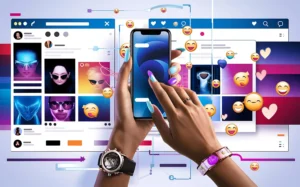In today’s digital landscape, UI (User Interface) and UX (User Experience) have become buzzwords. However, many misunderstandings surround these concepts, leading to flawed designs and, ultimately, poor user experiences. Let’s dive into six of the most common misconceptions about UI/UX design and set the record straight.
1. UI and UX are synonymous terms
Think of it this way: UI is the car’s sleek design and dashboard layout, while UX is how smooth the drive feels.
Debunking the myth: A product can have a beautiful interface but still deliver a poor user experience if the functionality and flow don’t meet users’ needs.

2. UX Design Is Only About Usability
Although usability is a core component of UX, it’s not the only factor. UX also encompasses user emotions, branding, accessibility, and information architecture. A well-designed product not only works well but also delights users and keeps them coming back.
Debunking the myth: Effective UX design balances usability with aesthetic appeal and emotional engagement. It’s not just about making a product easy to use—it’s about making it enjoyable and memorable.
3. Good UX Means It Works for Everyone
This myth stems from the idea that a “one-size-fits-all” solution is possible. In reality, no design can cater to every single user’s preference and need. Different users have unique goals, behaviours, and contexts.
4. Aesthetics Are Less Important in UX
Many assume that a good user experience is all about function, while aesthetics are merely a bonus. However, visual appeal is closely tied to usability. If a design looks outdated or messy, users might distrust it or feel frustrated.
5. User Testing Is Optional
Some believe they can skip user testing by relying on their instincts or general design guidelines. However, no matter how experienced a designer is, assumptions can lead to errors.
6. Once the UX Is Designed, It's Final
Another common misconception is that UX design is a one-and-done task. In reality, user needs evolve, technology advances, and market trends shift.
Conclusion
UI/UX design is more than creating pretty interfaces or intuitive navigation paths—it’s about shaping how users interact with your product at every touchpoint. By debunking these misconceptions, businesses can better align their design process with user expectations, leading to more effective, engaging, and enjoyable experiences.
What misconceptions have you encountered about UI/UX design? Share your thoughts in the comments below!









